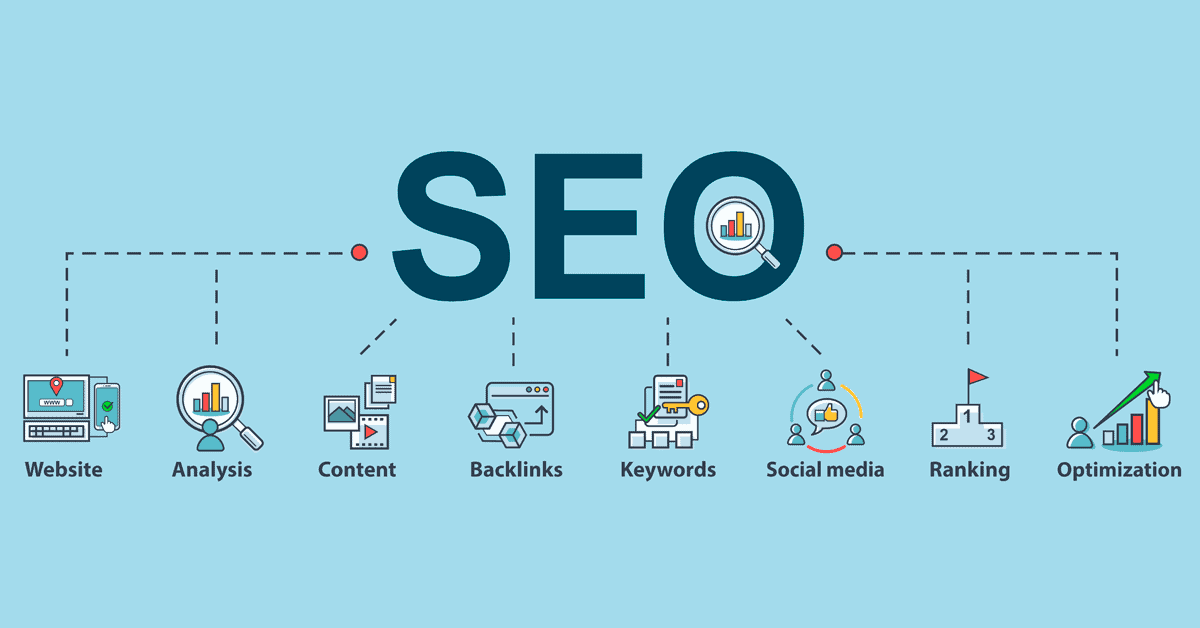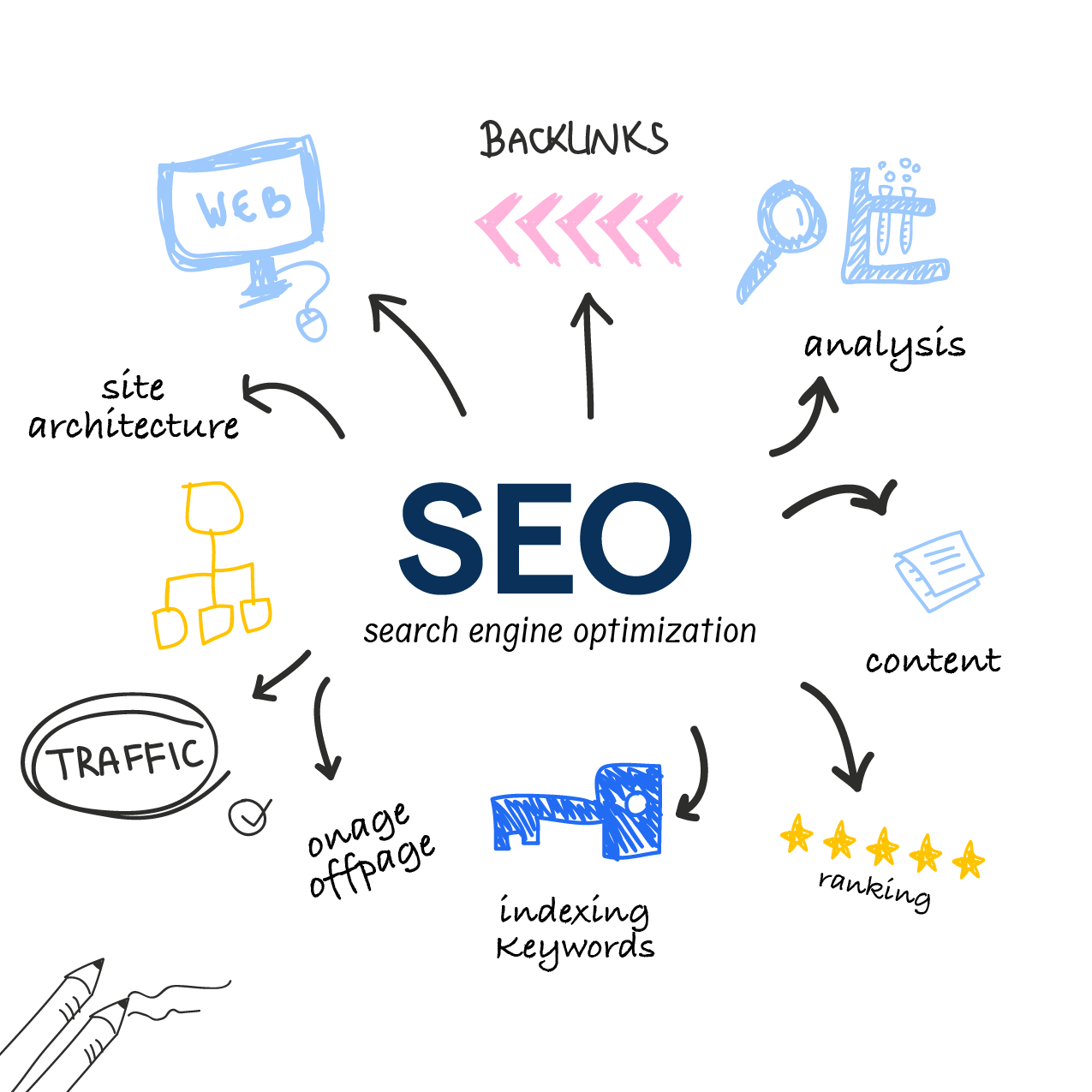Hi there friend! Are you tired of seeing your competitors dominate the search results? Does your content get lost in the vast digital abyss? Fear no more! SEO blogging is here to revolutionize your content marketing strategy and catapult your website to the top of Google’s rankings!
The SEO Apocalypse: Brace Yourself for a New Era!
Hold on tight, content creators, because the SEO landscape is changing faster than ever before! Gone are the days of simply churning out content and building shady backlinks. The rise of artificial intelligence (AI) is transforming how people search and consume information. To stay ahead of the curve, you need to embrace these seismic shifts and adapt your SEO strategy accordingly.
Double the Trouble, Double the Fun: Two SEO Strategies for Maximum Impact!
Prepare to break free from the shackles of a single, one-size-fits-all SEO strategy! The future demands a two-pronged approach, targeting both top-of-funnel and bottom-of-funnel traffic. At the top of the funnel, your goal is to capture the attention of users who are in the early stages of their research journey. They may have a problem but haven’t yet identified a solution, let alone your brand as the answer. This is where generative engine optimization (GEO) comes into play.

GEO: The Game-Changer That Will Catapult Your Content to AI Stardom!
Get ready for the biggest SEO revolution since the dawn of Google Ads! GEO is the secret sauce to getting your business featured and recommended by cutting-edge AI tools like ChatGPT and Google’s AI overviews. These AI powerhouses are changing the search game, providing users with instant answers and insights without them having to click through to multiple websites.
Imagine this: You search for “generative engine optimization services” on Google, and bam! The AI overview dominates the search results, pushing down the traditional organic listings. And guess what? Your website is featured prominently in that AI overview, giving you a massive visibility boost!
But GEO isn’t just about Google’s AI overviews; it’s about conquering all AI-powered search tools, including ChatGPT. These tools are becoming the go-to source for users seeking recommendations and information. By optimizing your content for GEO, you can tap into this growing trend and position your brand as the ultimate authority in your industry.
From Google Search to AI Supremacy: How to Dominate GEO!
Now, you’re probably thinking, “Okay, GEO sounds awesome, but how do I actually do it?” Well, my friend, here’s a sneak peek into the GEO playbook:
- Rank High in Regular Search Results: The foundation of GEO lies in ranking well in traditional web searches, especially on Google. Google’s AI overviews draw heavily from the regular search results, so if you’re not ranking high there, you’re missing out on a huge opportunity.
- Target Long-Tail and Specific Keywords: AI-powered searches encourage users to ask more specific and detailed questions. By creating content that addresses these long-tail keywords, you increase your chances of ranking for those searches and informing the AI tools about your expertise in that niche.
- Mirror the AI’s Answer Structure: Analyze how AI tools structure their answers. Typically, they provide a concise answer followed by supporting details and considerations. Mimic this structure in your content to align with the AI’s expectations and increase your chances of getting featured.
- Showcase Your Experience and Expertise: AI tools prioritize websites that demonstrate firsthand experience and expertise in the topics they discuss. Highlight your credentials, certifications, and real-world examples to build trust with both users and AI algorithms.
Beyond Your Website: The Power of Digital PR and Content Marketing!
GEO isn’t just about optimizing your own website; it’s about getting your brand featured on high-authority third-party websites. Tools like Perplexity, another powerful AI search engine, use a multi-step search process that combines answers from various sources. They analyze underlying searches, visit multiple websites, and synthesize the information into a comprehensive set of results.
To excel in this new landscape, focus on:
- Digital PR: Secure media coverage, guest blog posts, and interviews on relevant industry websites.
- Content Marketing: Create valuable and shareable content that naturally attracts backlinks and social media shares.
- Brand Consistency: Ensure that the messaging and information about your brand across all platforms is consistent and aligns with your overall positioning.
The Two-Headed SEO Beast: Adapting to Shifting User Behavior!
One of the most significant impacts of AI-powered search is the potential for organic traffic drops, even if your SEO is top-notch. Why? Because AI tools are essentially hijacking the top of the funnel, providing users with the information they need without them ever having to visit your website.
Think about it: If you can get all the information you need about business bank accounts directly from an AI overview, why would you bother clicking through to individual bank websites? This shift in user behavior necessitates a two-headed SEO strategy:
- Top-of-Funnel and Middle-of-Funnel Strategy: Focus on GEO to get your brand recommended in AI answers and capture users in the early stages of their research journey.
- Bottom-of-Funnel Strategy: Optimize your website for specific product or brand searches to capture users who are ready to make a purchase.
EAT and E-A-T-N: The Google-Approved Framework for AI Domination!
Google has been preaching the importance of E-A-T (Expertise, Authoritativeness, and Trustworthiness) for years. Now, with the rise of AI, E-A-T has evolved into E-A-T-N, with the “N” standing for “Next.” This updated framework emphasizes the importance of demonstrating experience, expertise, authoritativeness, and trustworthiness in a way that anticipates and adapts to the evolving needs of users and AI algorithms.
To boost your E-A-T-N:
- Feature Author Bios: Showcase the credentials and experience of your content creators.
- Display Content Review Dates: Show that your information is up-to-date and relevant.
- Highlight Accreditations and Certifications: Emphasize your industry recognition and expertise.
- Incorporate Real-World Examples and Case Studies: Demonstrate your practical knowledge and experience.

The Battle for Attention: Stand Out in the AI-Powered Search Landscape!
With AI search results often featuring only a few links, competition is fiercer than ever. To stand out from the crowd, you need to get creative and think outside the box.
Consider these strategies:
- Conduct Original Research: Publish unique data and insights that attract media attention and backlinks.
- Launch PR Campaigns: Partner with influencers, host events, and leverage social media to amplify your brand’s visibility.
- Engage in Community Building: Participate in industry forums, answer questions on social media, and build relationships with thought leaders.
Voice Search: The Sleeping Giant Awaits Its Awakening!
While voice search has been touted as the “next big thing” for years, it hasn’t quite lived up to the hype. Most voice searches are still basic informational queries, like checking the weather or getting a definition. However, as voice assistants become more sophisticated and capable of handling complex questions, voice search traffic is likely to increase in value.
To prepare for the rise of voice search:
- Optimize for Natural Language: Use conversational language and long-tail keywords that align with how people speak.
- Target Featured Snippets: Aim to rank in position zero, as voice assistants often read aloud the featured snippet.
- Create Voice-Specific Content: Develop content specifically tailored for voice search, such as FAQs, how-to guides, and local business information.
Conclusion
The SEO landscape is evolving at an unprecedented pace, driven by the rise of AI and the changing behaviors of users. To thrive in this dynamic environment, you need to:
- Adapt to GEO: Optimize your content for AI-powered search tools to capture top-of-funnel traffic and establish your brand as an authority.
- Implement a Two-Headed SEO Strategy: Target both top-of-funnel and bottom-of-funnel traffic to maximize your reach and conversions.
- Embrace E-A-T-N: Demonstrate experience, expertise, authoritativeness, and trustworthiness to build credibility with users and AI algorithms.
- Stand Out from the Crowd: Get creative with your content marketing and PR efforts to capture attention in a crowded digital landscape.
- Prepare for Voice Search: Optimize your content for natural language and target featured snippets to stay ahead of the curve.
By embracing these strategies, you can transform your SEO blogging into a powerful weapon that drives traffic, boosts conversions, and establishes your brand as a digital powerhouse!
FAQs
What is the difference between SEO and GEO? SEO (Search Engine Optimization) focuses on optimizing your website and content to rank high in traditional search engine results pages (SERPs). GEO (Generative Engine Optimization), on the other hand, specifically targets AI-powered search tools, such as ChatGPT and Google’s AI overviews, to get your brand featured and recommended in their answers.
How can I measure the success of my GEO efforts? You can measure the success of your GEO efforts by tracking metrics such as:
- AI Overview Rankings: Monitor your position in Google’s AI overviews for relevant keywords.
- ChatGPT Recommendations: Track how often your brand is recommended by ChatGPT in response to relevant queries.
- Referral Traffic from AI Tools: Analyze your website traffic to identify referrals from AI-powered search tools.
What are some common mistakes to avoid in SEO blogging? Some common mistakes to avoid in SEO blogging include:
- Keyword Stuffing: Overusing keywords in an unnatural way can harm your rankings.
- Creating Thin Content: Short, low-quality content is unlikely to rank well or engage users.
- Ignoring Mobile Optimization: Your website and content must be mobile-friendly to cater to the growing number of mobile users.
- Neglecting Backlinks: Building high-quality backlinks from reputable websites is crucial for SEO success.

